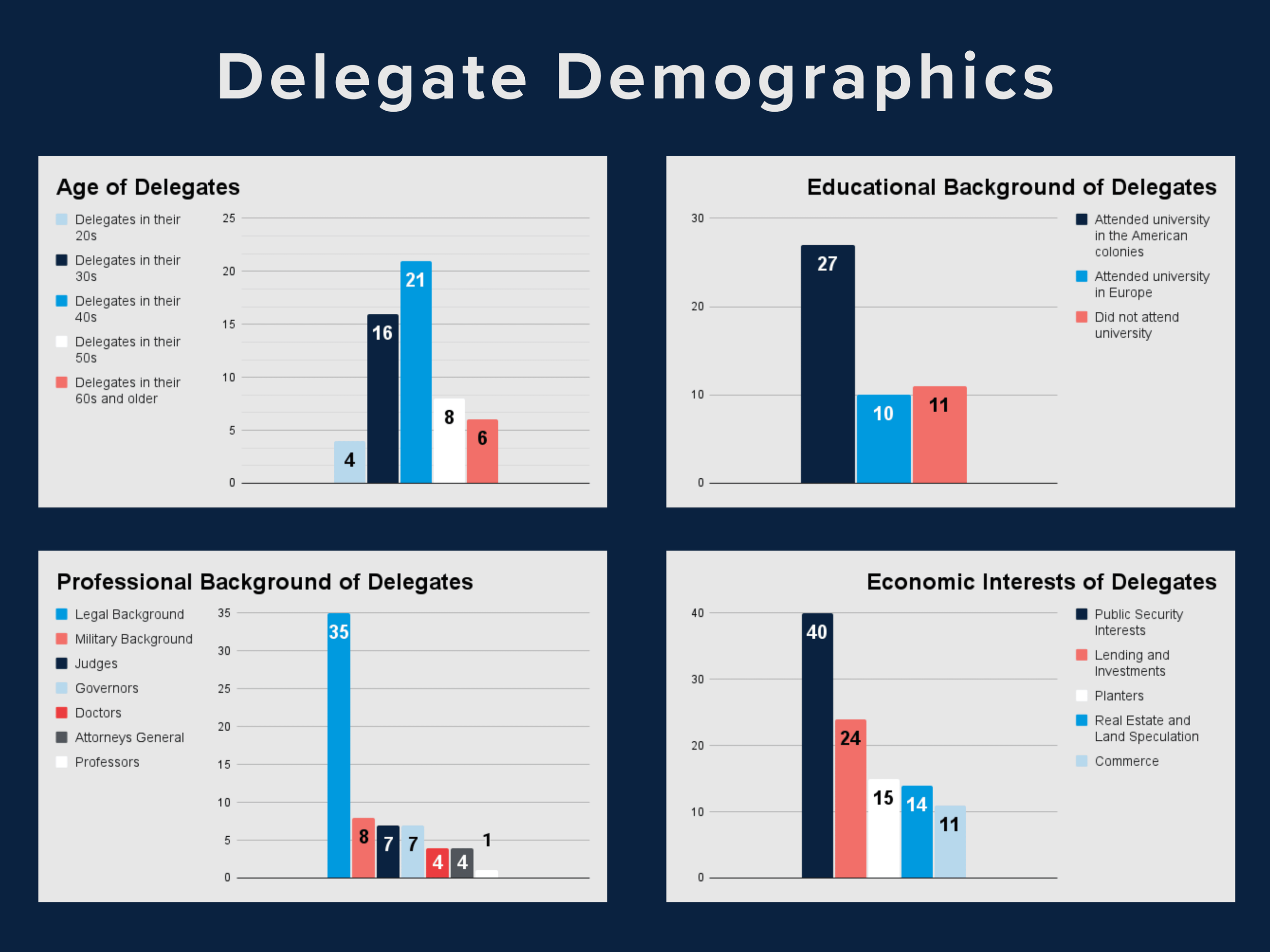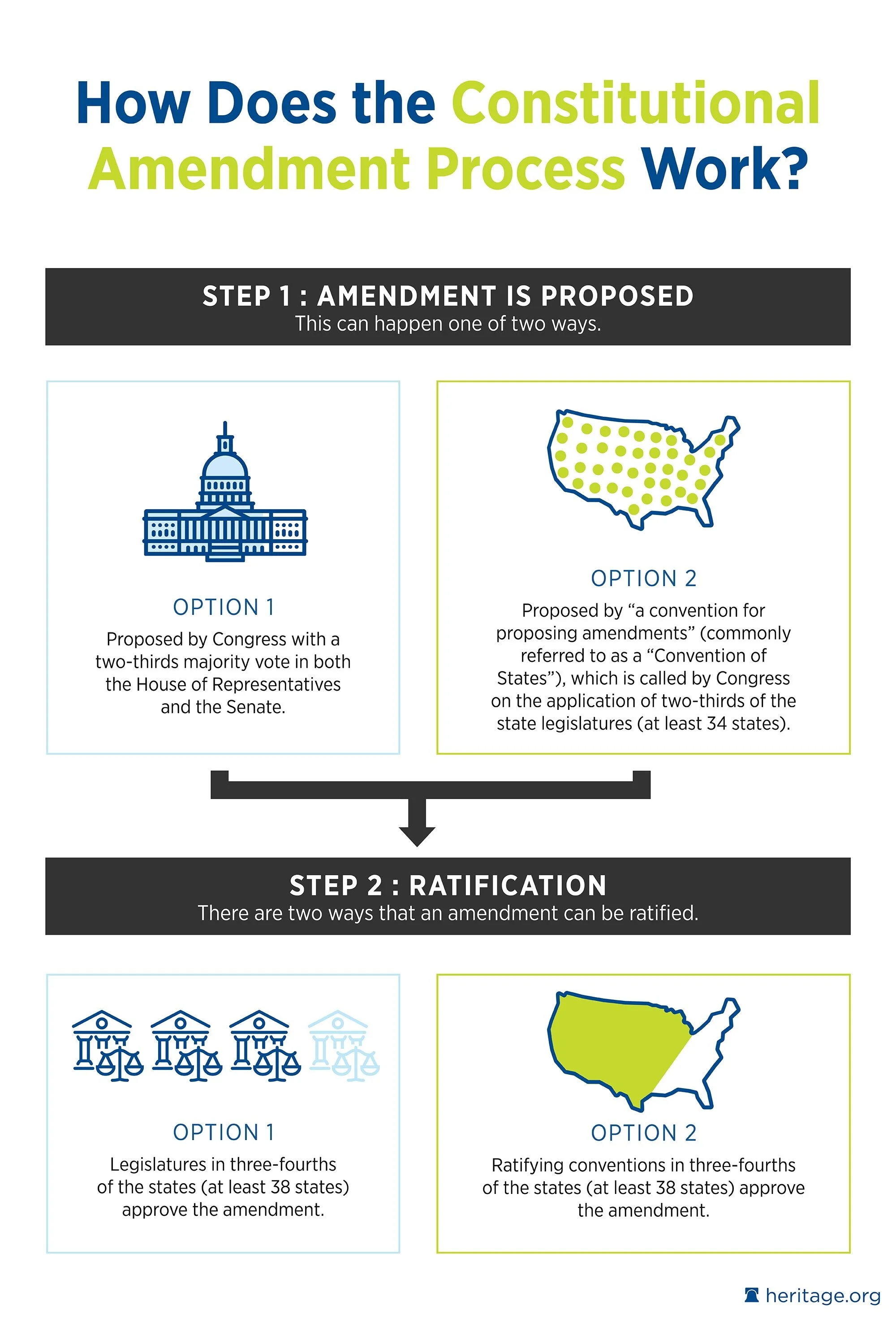Who were the delegates to the Constitutional Convention?
Critical Analysis
Find answers to the following questions using the visual above, any links below, your big brain, and your knowledge of American government and politics:
55 men met in Philadelphia, Pennsylvania, from May 25 to September 17, 1787, to draft the United States Constitution, replacing the existing Articles of Confederation. The average age of the delegates was 42, and four of the most influential delegates—Alexander Hamilton, Edmund Randolph, Gouverneur Morris, and James Madison—were in their thirties. Jonathon Dayton the youngest delegate was only 26 years old, Benjamin Franklin, the oldest, was 81! According to the visual above, how many of the men at the Constitutional Convention were in their 20s?
According to the visual above, what was the most common age of the White men at the Constitutional Convention?
A constitution is a set of fundamental principles or established precedents according to which a state or other organization is governed. 11 of the delegates to the Constitutional Convention attended Princeton University - more than any other university. According to the visual above, how many of the 55 delegates did not attend any university?
The United States Constitution is the oldest written constitution in the world that is still in use. According to the visual above, what was the most common occupation/professional background of the men at the Constitutional Convention?
According to the visual above, 55 delegates were planters. How do you think the demographic makeup of the Constitutional Convention is most different from the current U.S. Congress.
Of the 55 delegates to the Constitutional Convention, about 25 owned slaves. Although the word "slave" does not appear in the Constitution, slavery received important protections in the Constitution. The notorious three-fifths clause—which counted three-fifths of a state’s slave population in apportioning representation—gave the South extra representation in the House of Representatives and extra votes in the Electoral College. The Constitution also prohibited Congress from outlawing the Atlantic slave trade for twenty years. A fugitive slave clause required the return of runaway slaves to their owners. The Constitution gave the federal government the power to put down domestic rebellions, including slave insurrections. Although not included in the visual above, can you guess how many of the men who attended the Constitutional Convention were white?
Despite 27 amendments over the past 238 years (one Amendment every 8.8 years), the basic framework of government written in The U.S. Constitution has remained mostly unchanged. Historian Jill Lepore argues that the Founders intended for the Constitution to change and be amended over time, but despite Article V of the U.S. Constitution which lays out the amendment process, “The U.S. Constitution has one of the lowest amendment rates in the world. Some 12,000 amendments have been formally introduced on the floor of Congress; only 27 have ever been ratified, and there has been no significant amendment in more than 50 years.” The U.S. Constitution is deliberately difficult to amend and requires a two-thirds vote in both houses of Congress and ratification by three-fourths of the state legislatures, making it a high bar to clear. How do you think political polarization (division) impacts the likelihood of amending the Constitution today?
I like to tell my students that evolution stops revolution. Or as Jill Lepore more eloquently puts it, “Failing to amend the Constitution as needed and desired is a lost opportunity and sets a dangerous course. One of the Constitution’s founding purposes was…to allow for change without violence. Amendment is a constitution’s mechanism for the prevention of insurrection—the only way to change the fundamentals of government without recourse to rebellion.” Do you think the U.S. is likely to fundamentally change our government through amendment?
This summer our nation has been rocked by political violence. Do you think we need a new Constitutional Convention to deal with this current political crisis?
All 50 states have Constitutions, each with an amendment process. Unlike the federal Constitution, amending the constitution at the state level is a regular occurrence. Since 1789, some 7,000 amendments formally proposed in the states have been ratified, more than two-thirds of those introduced. Why do you think states are so much more likely to amend their constitutions than the national government is?
Write and Discuss
Take ten minutes to write about the question at the top of the page and then discuss with your classmates.
Act on your Learning
Read about the constitutional amendment process, write a proposal for a new amendment to the constitution, and send it to your congressional representative.
Get Creative
Create a profile of the average delegate to the Constitutional Convention.


